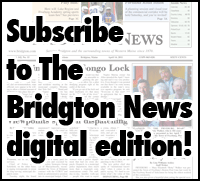Are you happy with your WiFi provider?
By Dawn De Busk
Staff Writer
CASCO — Somebody someday might ask, ‘Are you satisfied with your ISP?’ Some people in Sebago have heard that one before.
Two neighboring towns are throwing support behind the Town of Sebago. The boards of selectmen in both Naples and Casco have gone through the formality of drafting and signing a letter, saying that elected officials support Sebago applying for a grant to bolster Internet access by putting in fiber.
In related business, going forward, there will be Internet Service Provider (ISP) surveys, or demand surveys, offered in the towns of Naples and Casco in places where the public gathers — libraries, community centers, farmers’ markets. The group conducting the surveys is trying to get a feel if the general population is interested in improving WiFi connections. Apparently, the drive for installing fiber is the interest not the density of the population.
Currently, the cost of fiber is $60,000 a mile to build, according to Andrew Davis, who represented his family’s company Sebago Fiber.
The Town of Raymond has identified about 14 miles of fiber, Davis said. Meanwhile, just under 10 miles of fiber installation is being recommended for Casco, he said.
Definitely, a good place for fiber is from the Casco Community Center to the Casco Naples Transfer Station, since that is shared by Naples and could be interconnected. The section of Route 302 in South Casco is ripe for fiber installation, too, he said. An estimated 9.84 miles of fiber would cost $590,000, Davis said.
Recently, the selectmen in Naples and in Casco heard the presentations from the Greater Portland Council of Governments (GPCOG) demonstrating about two years of work done by volunteers on the Cumberland Oxford Lake Area Broadband (COLAB) Initiative.
Naples hosted the speakers on Sept 25, and the group appeared in Casco on Oct. 3
Sebago Fiber was awarded the bid. The company has already installed fiber and improved internet service on Frye Island.
Clara McCool, regional broadband program director at GPCOG, led the discussion.
“Why does high speed internet matter? As we move forward, it becomes more and more necessary to be online to participate in daily life. We saw this when the pandemic hit. People having to take classes online people having to work from home,” McCool said. “In a lot of rural areas, there was a realization that while there was internet access within the dense parts, there were people on that outskirts who were left behind. With this realization, COLAB was formed in 2021. It included Casco, Naples, Sebago, Standish and Raymond. There was an understanding that each town was going it alone, but they were going through the same processes do GPCOG stepped in to help. Last fall, we applied for and received a ‘Get Ready’ grant from the state That would get each community funding to do outreach, and hire a supportive communication consultant,” she said.
“One of the steps is to issue Requests for Proposal (RFPs) to interested providers to identify a solution,” she said.
GPCOG got five bidders and Sebago Fiber was the company that was awarded the bid.
“We did Frye Island as a demonstration. Our goal was 100% build up in two years. We focused on areas that were commercially viable. We built around the outside of the island. We build 96% in the first year. In the end, two-thirds switched from DSL to us,” Davis said.
Brandy Morris, also with Sebago Fiber, explained the vital demand survey about peoples’ ISP or internet service provider.
“In Town of Sebago in one week, we got 219 responses. Only 17 percent were satisfied with their current carrier. The number of people who are satisfied is very low,” she said. “We rolled this out in each community. We do different means. Your town emails, newsletters, social media. We think print advertising is very effective. We put up road signage in prominent locations.”
GPCOG secured a $10,000 grant for Casco that can be used for community engagement, planning workshops and an engineering plan, Davis said.
“We would love to launch a demand survey for your town,” he said. “Our plan is to be building fiber by 2024. I’ll try to get coverage in every town. The real thing is the sign-ups. The demand survey data is used to plan.”
Using municipal building as an anchor and running fiber between those locations frequently benefits the residential areas.
“We look at the needs between buildings. We discuss how the municipal needs can complement the residential needs,” Davis said.
Then, the board voted, 4-0, to authorize GPCOG and Sebago Fiber to use $10,000 grant to conduct surveys.


